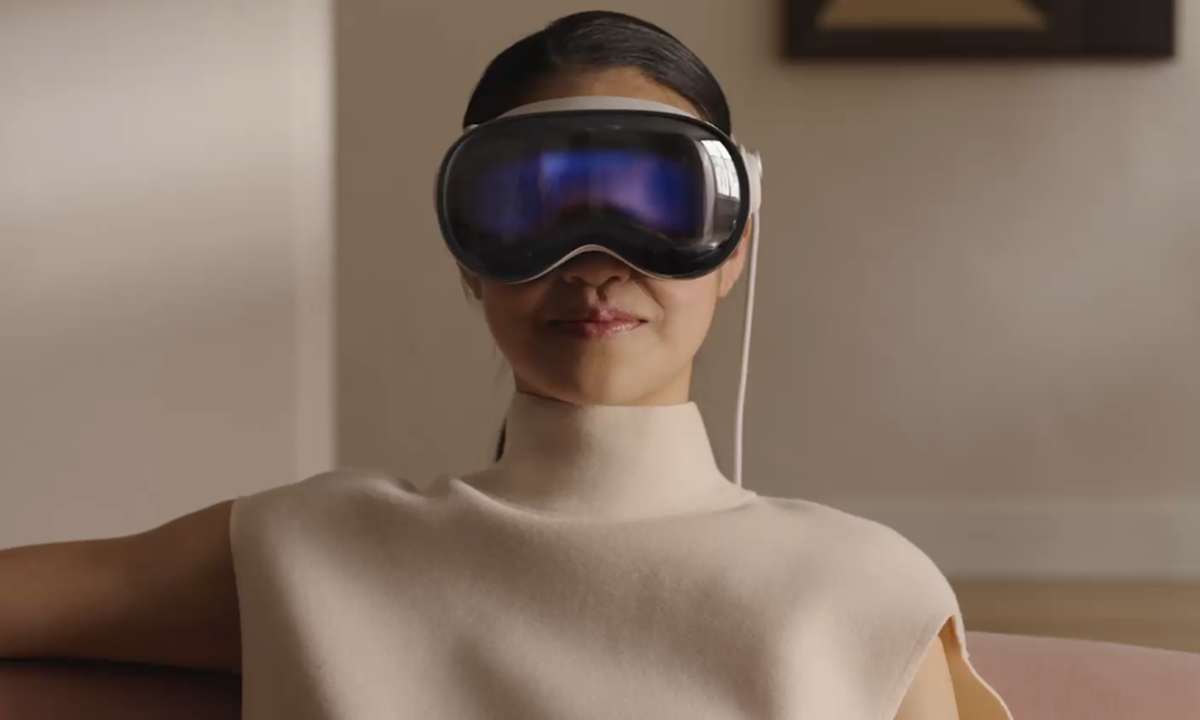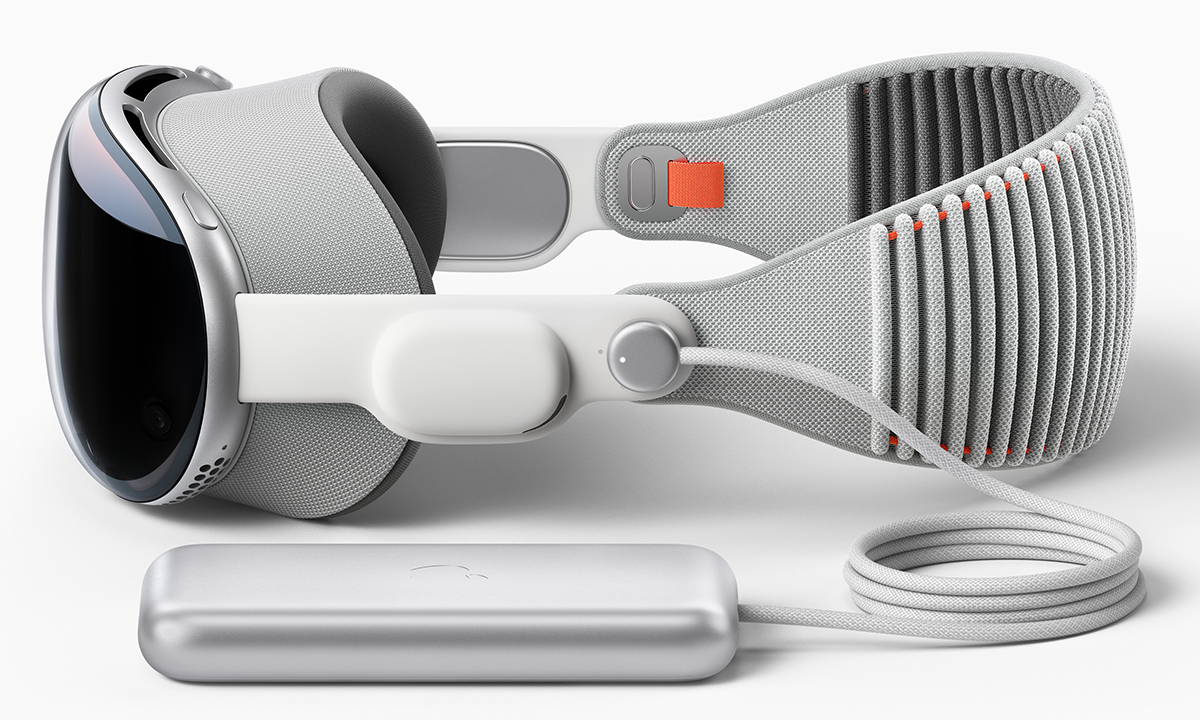Apple’s $3500 Mixed Reality Headset No Shoo-In to Be a Slam Dunk

Apple’s foray into the mixed-reality world is official.
And the reality beyond the announcement? Well, it may be, mixed.
Past may be prologue, and the prologue is the HomePod — indicating that the tech behemoth’s newest product launch is no shoo-in to be a slam dunk.
As the world knows by now, the tech behemoth has unveiled Vision Pro, the headset that many observers already-long awaited, and where the virtual reality (VR) offering had been the talk of Worldwide Developers Conference (WWDC).
Hefty Price Tag
 It costs just under $3,500, which, we contend, means that augmented reality living means that at least some of us will have to augment our salaries.
It costs just under $3,500, which, we contend, means that augmented reality living means that at least some of us will have to augment our salaries.
Beyond the price tag, and as detailed by CEO Tim Cook at the event, the Vision Pro will be “the first device you look through and not at,” adding that “your surroundings become an infinite canvas.” In terms of what’s on tap when the device comes to market next year, Apple will look to have 100 games available. Disney+ will also be available in tandem with the headset’s debut.
Meta’s the most obvious parallel — but so is the broader AR landscape — offering Apple a cautionary tale.
Hope and hype need the developer community to get on board, and consumers, too. As we documented here as Apple’s AR efforts were generating significant buzz, Karen Webster wrote of consumers that they “don’t want to give up the physical world to live mainly via avatars in a virtual one. Even though most — as in mostly all of them — very much want to use technology to improve their interactions with people and businesses in the physical world where they live right now.” Money’s been poured into the sector. In 2022, $120 billion was plowed into metaverse companies, up from $57 billion in 2021 and $29 billion in 2020.
Balancing Consumer Interest and Developers’ Efforts
So: Money’s been coming into the sector, but there’s a conundrum in the works, a vicious cycle of sorts if things go awry: There needs to be a critical mass of consumers to get developers to develop apps and programs and experiences for the Metaverse (no matter if the digital real estate, so to speak, is being claimed by Apple, Meta or anyone else), and yet the consumers won’t jump on board unless there are compelling apps and offerings out there to try out. If one side of the equation flags, so will the other.
Apple’s smart home initiatives, specifically through the HomePod, are instructive here. As reported in March, Apple unveiled a new version of its HomePod speaker, complete with “smart home” features such as temperature sensors and smoke/carbon monoxide alarm alerts. The move comes two years after Apple discontinued the previous version of the home assistant.
Discontinuing the speakers came after a set of price cuts for the smart speakers, a move that came when Amazon and Google already had competitors in the market for comparably cheaper prices — and as noted here, had not had a digital assistant (read: apps and services) that would have underpinned demand.
The Apple speakers had initially debuted for $350, and by 2019 had slashed the prices to below $300. In one parallel, then, Apple is following Meta and others into the metaverse, with a more expensive, untested product. Microsoft has sold only about 300,000 of its HoloLens augmented reality headset, which is akin to getting a few large U.S. suburbs enthusiastic about living life through the lenses.
Past performance does not guarantee future results, of course. We’re a few years into a bid by Apple to transform itself more fully into an ecosystem that brings service to the forefront of the company’s revenue profile. But services growth has been slowing to the mid-single digits, as measured in top-line increases.
The company now has 975 million paid subscriptions across its App Store, Apple Music, iCloud and payment services, so if Apple gets it right, perhaps transacting and interacting through virtual reality will become a reality — but if not, the price tag will be real and hefty.
